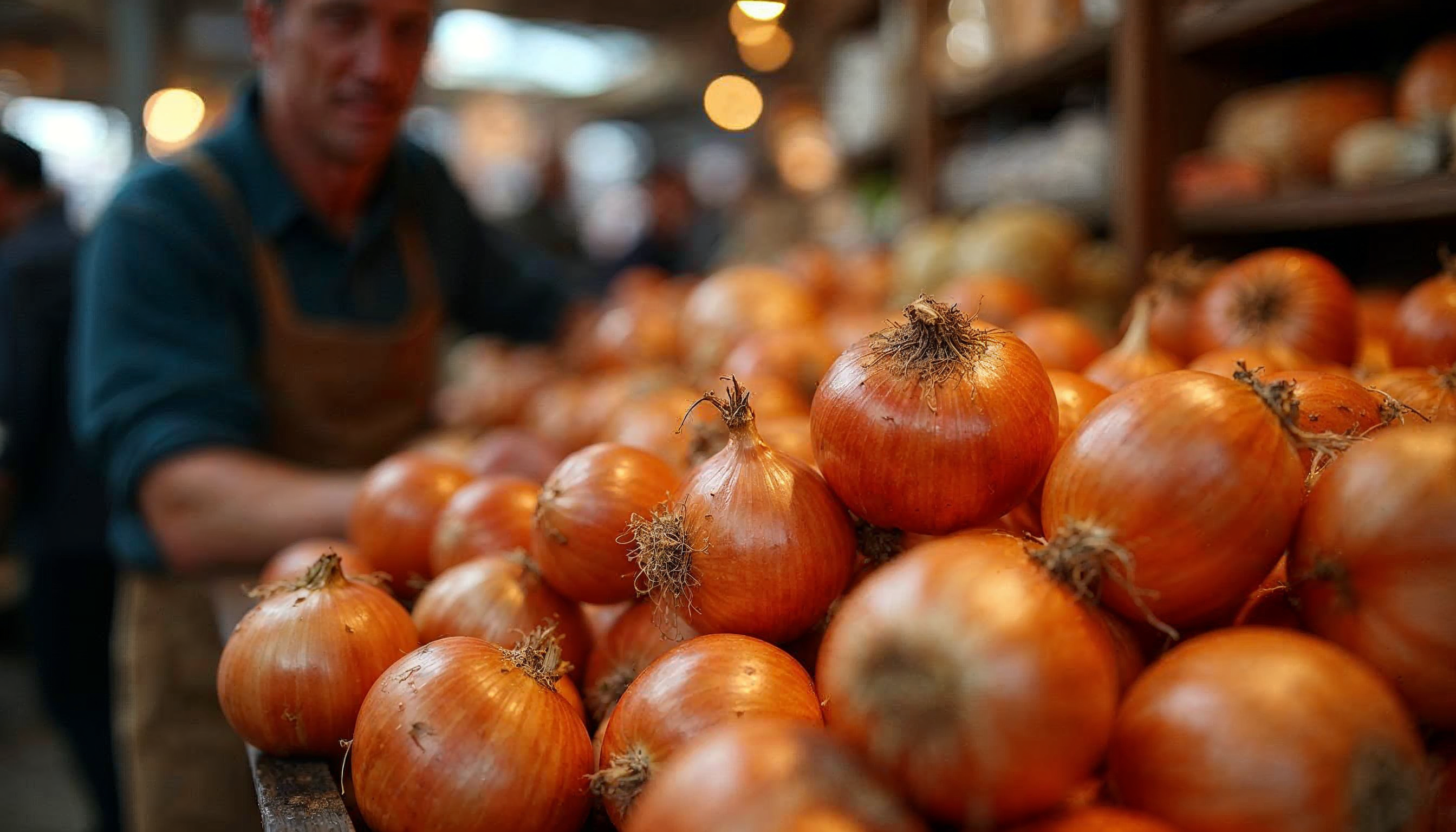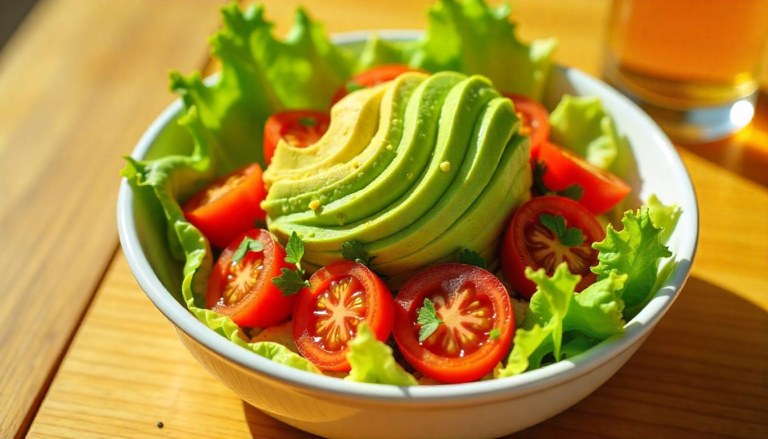The Ultimate Guide to Storing Onions: Keep Them Fresh Longer
Table of Contents
Storing Onions
Imagine reaching for an onion to complete your dinner recipe, only to find it soft, moldy, or sprouting. Frustrating, right? Did you know that improper storage causes the average household to waste up to 30% of their onions? Learning how to store onions properly not only preserves their flavor and nutritional value but also saves you money and reduces food waste.
In this comprehensive guide, you’ll discover the best methods for storing different types of onions, from whole to cut, and learn practical tips to extend their shelf life. Whether you have a pantry, refrigerator, or freezer, I’ll show you how to make the most of your space and keep your onions fresh for weeks—or even months.
Understanding Onions
Before diving into storage techniques, it’s important to understand the different varieties of onions and their unique characteristics.
Onion Varieties and Their Characteristics
- Yellow onions: The most common variety with papery golden-brown skin and strong flavor. These all-purpose onions have a relatively low moisture content, making them excellent candidates for long-term storage.
- Red onions: Recognizable by their purplish-red skin, these onions have a milder, slightly sweet flavor. They contain more moisture than yellow onions and typically don’t store quite as long.
- White onions: With their paper-white exterior, these crisp onions have a sharper, more pungent flavor. They have moderate storage potential.
- Sweet onions (Vidalia, Walla Walla, Maui): These larger, flatter onions have a higher water content and significantly lower sulfur content, giving them their signature sweetness. Their high moisture makes them more perishable than other varieties.
- Green onions/Scallions: These immature onions have long green tops and small white bulbs. Their high moisture content makes proper storage crucial.
- Shallots: Smaller than regular onions with copper-colored skin and milder flavor. Their storage needs differ slightly from regular onions.
Optimal Conditions for Onion Storage
For maximum longevity, onions require:
- Cool temperatures (32-40°F/0-4°C for long-term storage)
- Low humidity (65-70%)
- Good air circulation
- Darkness (light can cause sprouting)
The Science Behind Onion Spoilage
Storing Onions
Onions deteriorate due to several factors:
- Ethylene gas (produced by apples, potatoes, and other produce) accelerates spoilage
- Moisture encourages mold growth
- Heat speeds up deterioration
- Light triggers sprouting
Understanding these factors will help you make better storage decisions and keep your onions fresh longer.
How to Store Whole Onions (Uncut)
Whole, unpeeled onions store best in dry, well-ventilated conditions. Here are the best methods:
At Room Temperature
Room temperature storage works well for short to medium-term storage (2-4 weeks). For best results:
- Store in a mesh bag, open basket, or breathable container that allows air circulation
- Keep in a cool, dry place away from direct sunlight
- Maintain good ventilation to prevent moisture buildup
- Keep away from potatoes and other ethylene-producing fruits and vegetables
Mesh bags work exceptionally well because they allow air to circulate freely around the onions. Hanging baskets or wire bins are also excellent options as they keep onions separated and well-ventilated.
In the Pantry
For pantry storage:
- Choose a cool, dark corner away from heat sources like the stove
- Use a wooden crate, mesh bag, or open basket
- Arrange onions in a single layer when possible to prevent pressure points
- Check regularly and remove any that show signs of spoilage
In a Root Cellar
If you’re fortunate enough to have a root cellar, you’ve got the ideal environment for long-term onion storage:
- Maintain temperatures between 32-40°F (0-4°C)
- Keep humidity at 65-70%
- Ensure good ventilation
- Store onions on slatted shelves or in mesh bags
- Keep different produce types separated to prevent cross-contamination
Do’s and Don’ts for Whole Onion Storage
Do:
- Remove any onions with soft spots, as they’ll spoil quickly
- Store in a well-ventilated container
- Keep onions dry
- Store in a dark place to prevent sprouting
- Check regularly for signs of spoilage
Don’t:
- Store in plastic bags (traps moisture)
- Keep near potatoes (both emit gases that speed spoilage)
- Store in the refrigerator (unless they’re sweet onions)
- Stack too many on top of each other
- Store in high humidity areas
How to Store Cut Onions

Once an onion is cut, the rules change dramatically. Exposure to air accelerates spoilage, so proper storage becomes critical.
In the Refrigerator
Cut onions must be refrigerated:
- Place in an airtight container or resealable plastic bag
- Remove as much air as possible before sealing
- Glass containers work best for preventing odor transfer
- Use within 7-10 days for best quality
To minimize onion odor in your refrigerator:
- Double-bag cut onions
- Use glass containers with tight-fitting lids
- Place an open box of baking soda in your refrigerator to absorb odors
- Clean any spills immediately
Do’s and Don’ts for Cut Onion Storage
Do:
- Refrigerate immediately after cutting
- Use airtight containers
- Label with the date you cut them
- Use within 7-10 days
- Keep away from dairy products, which can absorb odors
Don’t:
- Leave cut onions at room temperature
- Store in metal containers (can cause discoloration)
- Keep for more than 10 days
- Reuse containers without thorough washing
How to Store Cooked Onions
Cooked onions require proper handling to maintain food safety:
- Cool cooked onions to room temperature within 2 hours
- Store in airtight containers in the refrigerator
- Use within 3-5 days
- Reheat thoroughly before consuming
For food safety, never leave cooked onions at room temperature for more than 2 hours, as bacteria can multiply rapidly in the “danger zone” (40-140°F/4-60°C).
Can You Freeze Onions? (And How To Do It Right)
Freezing is an excellent option for long-term storage. While the texture will change slightly, frozen onions work perfectly in cooked dishes.
Step-by-Step Freezing Instructions
- Peel and chop onions to your desired size
- Optional: Blanch for 30 seconds in boiling water, then cool quickly in ice water (helps preserve color and flavor)
- Drain and dry thoroughly on paper towels
- Portion into freezer bags or containers
- Remove air to prevent freezer burn
- Label with date and contents
- Freeze flat to allow for easier portioning later
Freezing Methods
- Chopped/Diced: Best for most cooking needs
- Sliced: Great for caramelizing later
- Pureed: Ideal for soups and sauces
- Flash freezing: Spread chopped onions on a baking sheet, freeze until solid, then transfer to bags (prevents clumping)
Frozen onions will maintain good quality for 6-8 months and remain safe indefinitely.
Storing Different Types of Onions
Each onion variety has specific storage requirements:
Red Onions
Red onions store similarly to yellow onions but typically have a shorter shelf life due to their higher moisture content:
- Store in cool, dry, well-ventilated space
- Keep at room temperature for up to 30 days
- Can be refrigerated to extend life by 1-2 weeks
- Excellent candidates for freezing
White Onions
White onions have a slightly higher water content than yellow:
- Store in a cool, dry place with good air circulation
- Keep away from light to prevent greening
- Use within 2-3 weeks for best quality
- Refrigerate if your home is particularly warm
Yellow Onions
The champion of storage onions:
- Store at room temperature in a well-ventilated container
- Can last 2-3 months in ideal conditions
- Do not refrigerate unless cut
- Perfect candidates for braiding if you grow your own
Sweet/Vidalia Onions
Sweet onions require special attention due to their high water content:
- Refrigerate sweet onions, unlike other varieties
- Wrap individually in paper towels or newspaper to absorb moisture
- Store in the crisper drawer set to low humidity
- Use within 1-2 weeks
- Can be frozen successfully after chopping
Green Onions/Scallions
Green onions need moisture to stay fresh:
- Trim the roots, leaving about 1 inch intact
- Place in a jar with 1-2 inches of water, covering only the roots
- Cover loosely with a plastic bag
- Change water every 1-2 days
- Store in refrigerator for up to 2 weeks
- Alternatively, chop and freeze in ice cube trays with water or oil
Shallots
Shallots store similarly to garlic:
- Keep in a cool, dry place with good ventilation
- Store at room temperature in a mesh bag or open container
- Can last up to 2 months in proper conditions
- Do not refrigerate whole shallots
How Long Do Onions Last?
Storage life varies greatly depending on onion type and storage method:
| Onion Type | Room Temperature | Refrigerated | Frozen |
|---|---|---|---|
| Yellow | 2-3 months | 1-2 months | 6-8 months |
| Red | 30-60 days | 1-2 months | 6-8 months |
| White | 2-3 weeks | 1-2 months | 6-8 months |
| Sweet | 1 week | 1-2 weeks | 6-8 months |
| Green | 1-2 days | 1-2 weeks | 6 months |
| Shallots | 1-2 months | 2-3 weeks | 6 months |
| Cut (any) | Not recommended | 7-10 days | 6-8 months |
| Cooked | 2 hours max | 3-5 days | 2-3 months |
Recognizing Spoiled Onions
Always check your onions before use. Discard onions showing these signs:
Visual signs:
- Dark or black spots
- Mold (typically appears as black, white, or green fuzzy patches)
- Excessive sprouting (small sprouts are fine to trim away)
- Soft, mushy areas
Texture:
- Sliminess
- Excessive softness
- Hollow feeling
Smell:
- Sour or rotten odor (different from the normal pungent onion smell)
- Musty smell
Never consume onions that show signs of mold or rotting, as they can cause foodborne illness.
Troubleshooting & FAQs
Why are my onions sprouting?
Sprouting occurs when onions are stored too long, exposed to light, or kept in fluctuating temperatures. To prevent sprouting:
- Store in a dark place
- Maintain consistent temperatures
- Use older onions first
Is it safe to eat onions that have started to sprout?
Small sprouts are safe to remove by cutting away the green center. If the onion is firm and doesn’t have any other signs of spoilage, it’s perfectly fine to use.
How can I prevent onions from making me cry?
While not strictly a storage issue, this common question can be addressed by:
- Chilling onions for 30 minutes before cutting
- Cutting under running water
- Using a sharp knife (reduces cell damage)
- Cutting near a ventilation fan
How to get rid of onion smell in the fridge?
To eliminate lingering odors:
- Place an open container of baking soda in the refrigerator
- Use activated charcoal to absorb odors
- Wipe down shelves with vinegar solution
- Keep cut onions in sealed glass containers
Conclusion
Proper onion storage is both an art and a science. By understanding the specific needs of different onion varieties and implementing the right storage techniques, you can extend their shelf life, maintain their flavor, and reduce waste.
Remember these key takeaways:
- Store most whole onions in cool, dry, dark, well-ventilated places
- Refrigerate cut onions promptly in airtight containers
- Sweet onions belong in the refrigerator, not the pantry
- Green onions stay fresh longest in water in the refrigerator
- Freezing works excellently for long-term storage
What’s your favorite way to store onions? Have you discovered any creative storage methods that work particularly well? Share your tips in the comments below!




